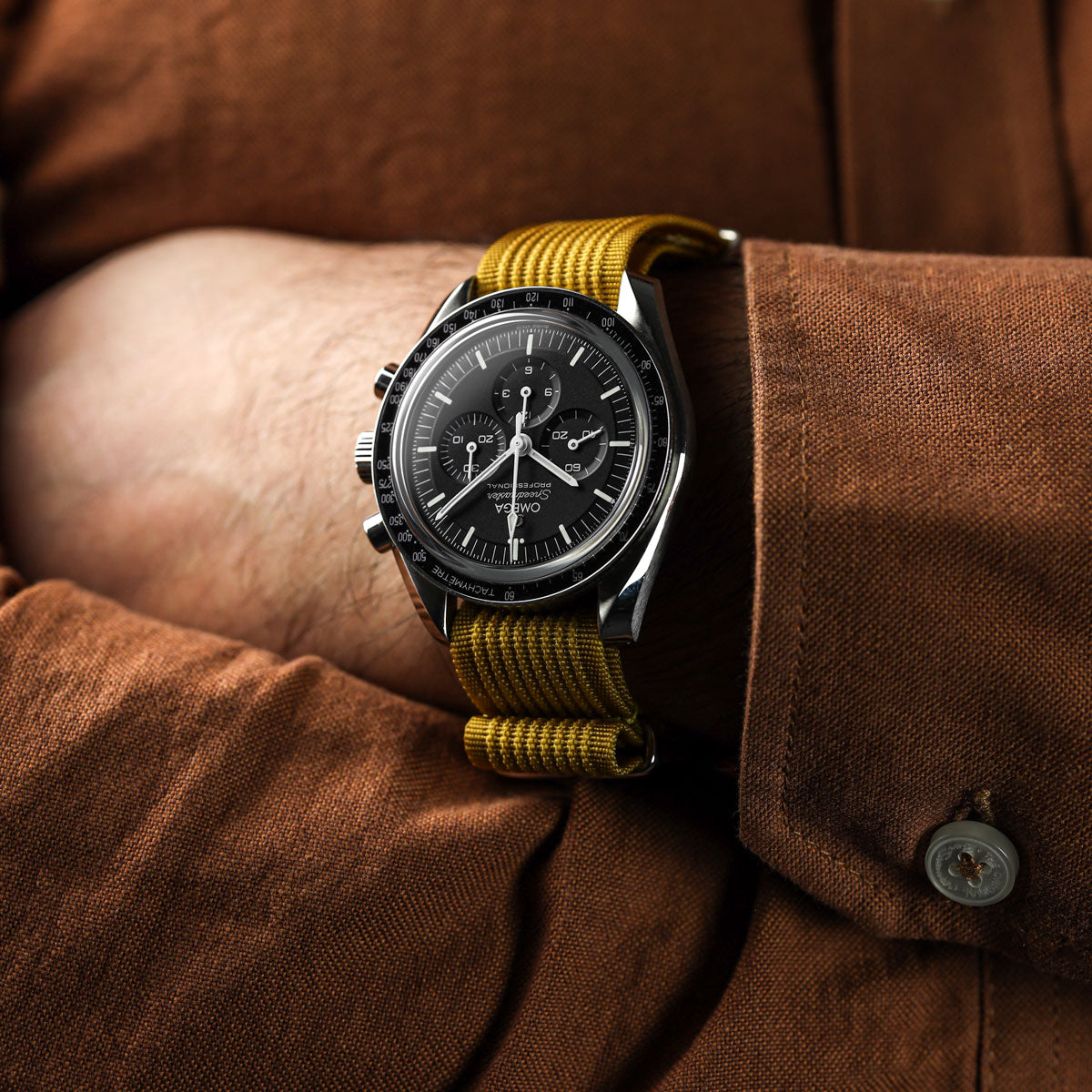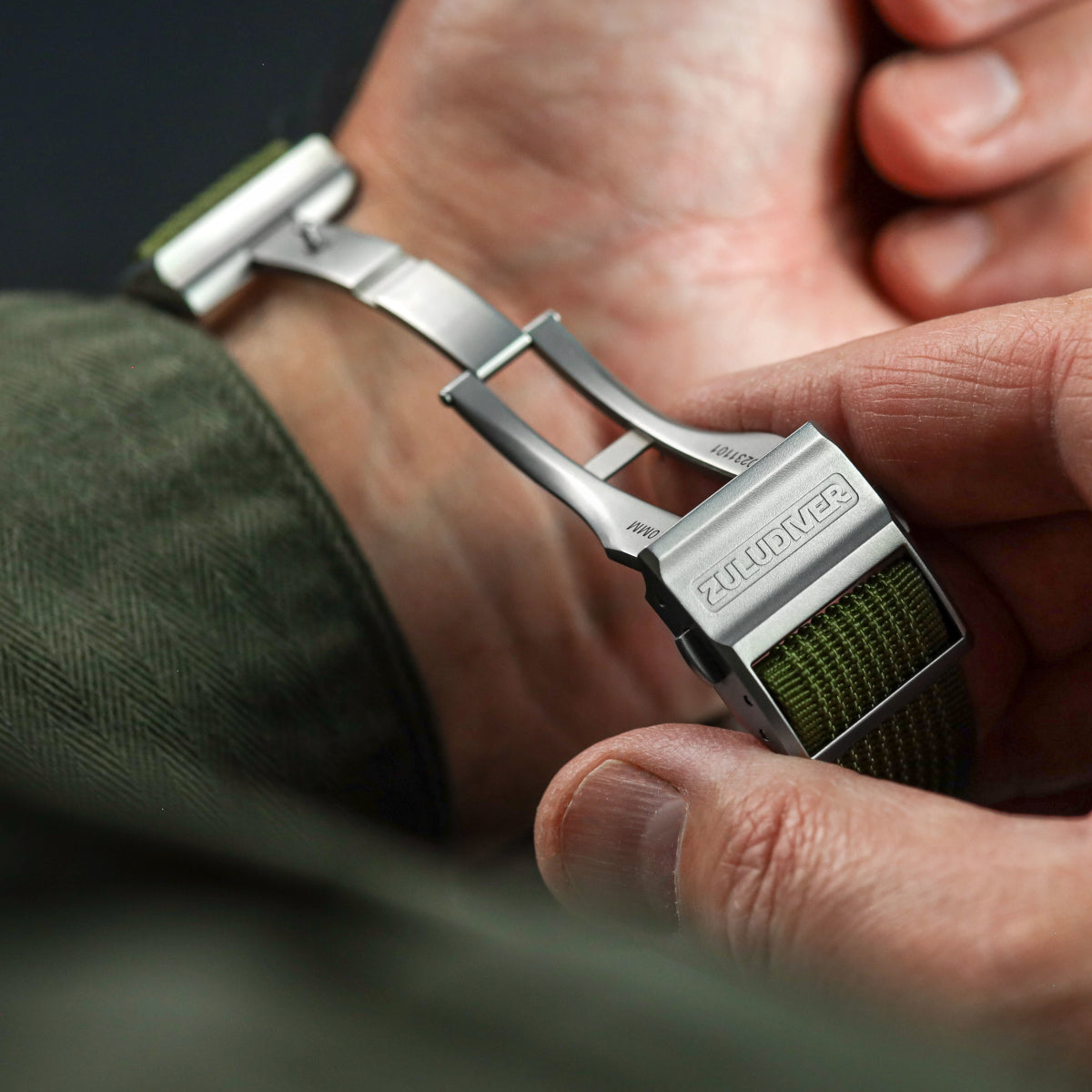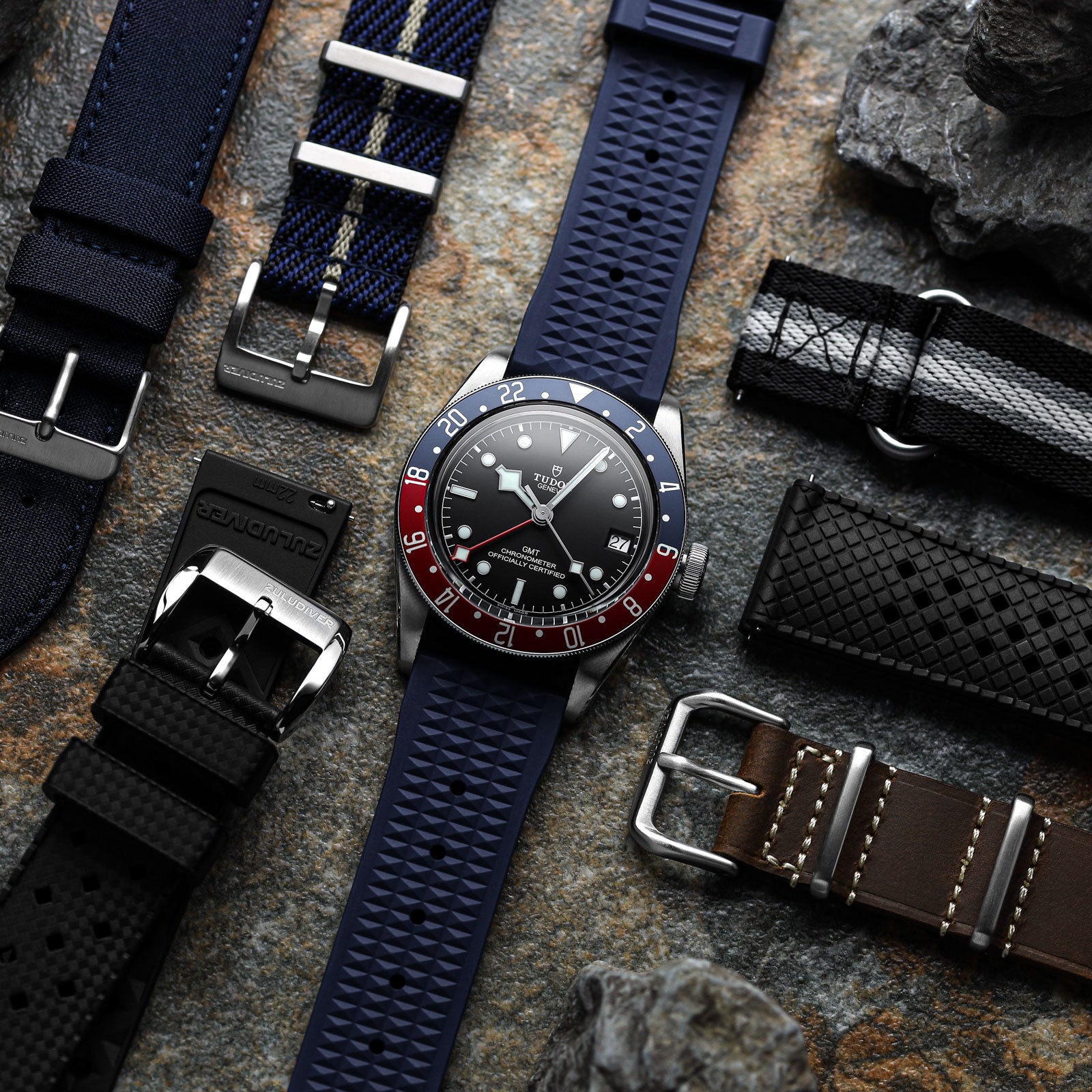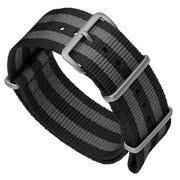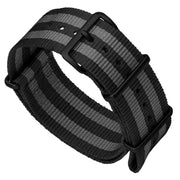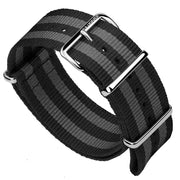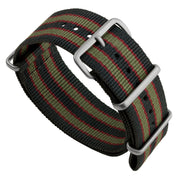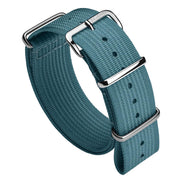Your Cart is Empty

How to Fit a 1973 British Military Watch Strap

Categories
September 17, 2021

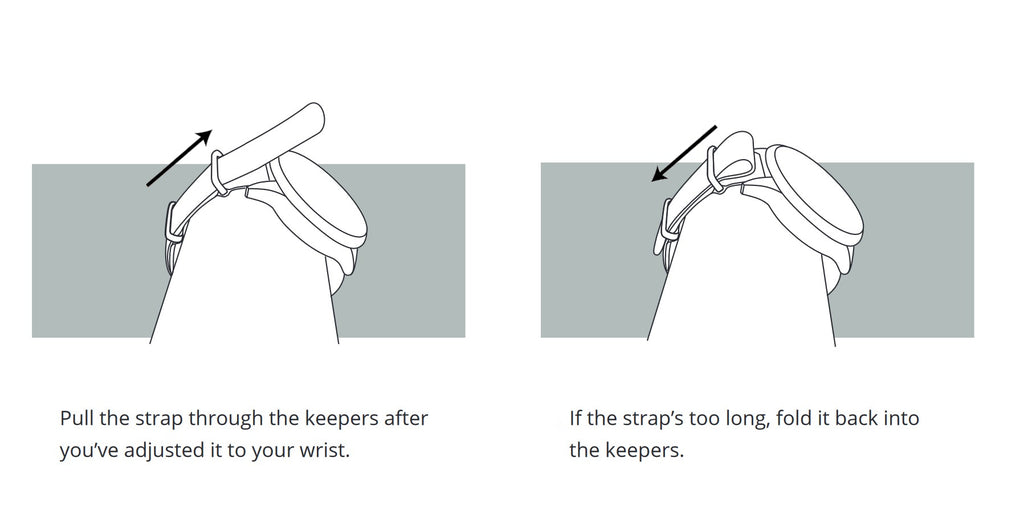
A definitive guide on how to wear and adjust a military watch strap
To be clear there is no right or wrong way to deploy one, but based on around 20 years of combined use between colleagues we all agreed that some methods of fastening and retention were definitely more efficient than others. In a series of three short features, we will look at everything from the history of the straps, user benefits, recommended deployment methods and real-life experiences.
What is a British military watch strap?
Let us start with a brief history of what some people (myself included) regard as the best watch strap of all time. Military watch straps, as we know them today, first appeared in 1973 as a standard issue strap to the UK Military. UKMOD Defence Standard 66-15 laid down the specifications for a grey nylon strap with chrome plated metalwork which was capable of resisting water, dirt, and provide comfort in all temperatures. The original 70s straps were 20mm although the current issue models additionally come in 18mm to match watches in service. Colloquially the straps are often called “G10s” (pronounced G-Ten). This nickname derives from the MOD Form G1098 which was required to requisition a new strap. Indeed, an old 45 Commando mentor of mine, to his very last day, called his watch strap a “G-Ten-Ninety-Eight”.
How to wear and adjust a military watch strap?
They are supremely comfortable and support watches of any weight and size. But you first need to understand how to fit the watch to the strap, especially if you are completely new to the world of G10s. This involves a bit of experimentation to find the sweet spot for the watch on the strap. Before we go into detail let us first confirm some part names. This strap comprises a long upper strap and short lower strap, a single buckle and three keepers, one at the buckle, one which sits above the watch (strap middle) and one which sits below. We will refer to each of those through the features. To fit a this style on a watch, take off the existing strap or bracelet leaving the spring bars in place. Good quality spring bars are absolutely essential, so do not compromise on this critical element. Superior spring bars are available from ZULUDIVER. A new strap will most likely come with the long upper strap through all the keepers. First take the upper strap out of the lowest keeper leaving it lose. Feed the shaped end of the long strap down between the top spring bar of the watch and the case, pass it under the case back and then up between the lower spring bar and case. Pull the watch up the strap to within about 3cm from the middle keeper which sits above the case. Take the lose shaped end of the long strap and feed it down through the lower keeper. This should sit the keeper about 1cm from the bottom of the watch case. See image of final result.
I have quite a large wrist which measures around 19.5cm (7.6in) so I prefer the watch to sit very close to the lowest keeper. When the strap curls round my wrist this position naturally forces the keepers into an aesthetically pleasing symmetry and more important places the buckle slightly off centre, so it is not touching the table or keyboard when I am writing.
Once you are happy with the watch position fasten the buckle in the traditional way. Now you are left with the one element which generally throws people new to the genre. The long length of top strap remaining.
The Long End
Why are these straps so long? A question we hear countless times. Simply because the long length and multiple holes allow you to wear it over clothing. Whether you are climbing K2, deep sea diving or on Special Operations the ability to wear your watch over a padded coat or wetsuit is one of the principal benefits of these straps (more about those in the next feature).
For now, let us just advise on how best to deal with the excess strap. You will need to tuck the strap back in on itself. If the strap is of a harder fabric material the best way is to pass the long end back up through the buckle end keeper and middle keeper. This leaves the shaped end sticking up towards the watch. Then take the shaped end and double it back and tuck it under the middle keeper as far as it will go but BEHIND itself, not on front, or you will end up with a flap that can catch.
If the strap is softer there is an even more secure method which really locks the strap. This is my favoured method, but it can only be achieved with a soft weave or well-worn example. Carry out the fastening process as above but after buckling pass the shaped end up and through the buckle keeper ONLY. Then fold it back inside itself under the buckle keeper. This will leave you with a double thickness loop of strap which you can squash flat and tuck under the middle keeper. See image. With practice this is easy, and it leaves the strap super secure if you are involved in serious activity.
Watch straps are a relatively inexpensive way to not only change a watch’s appearance but add a hugely practical element to everyday use. Now that you have the strap deployed, in the next feature we will have a look at the many benefits of these humble straps.

About the Author: Richard Brown
About the Author: Richard Brown
I truly believe one of the best partners in exploration and adventure is a fine watch. Over 30 years of collecting, my fascination with the technical capabilities of both vintage and modern timepieces has never abated and it is a privilege to be able to share this passion through writing.
More Articles by Richard Brown

